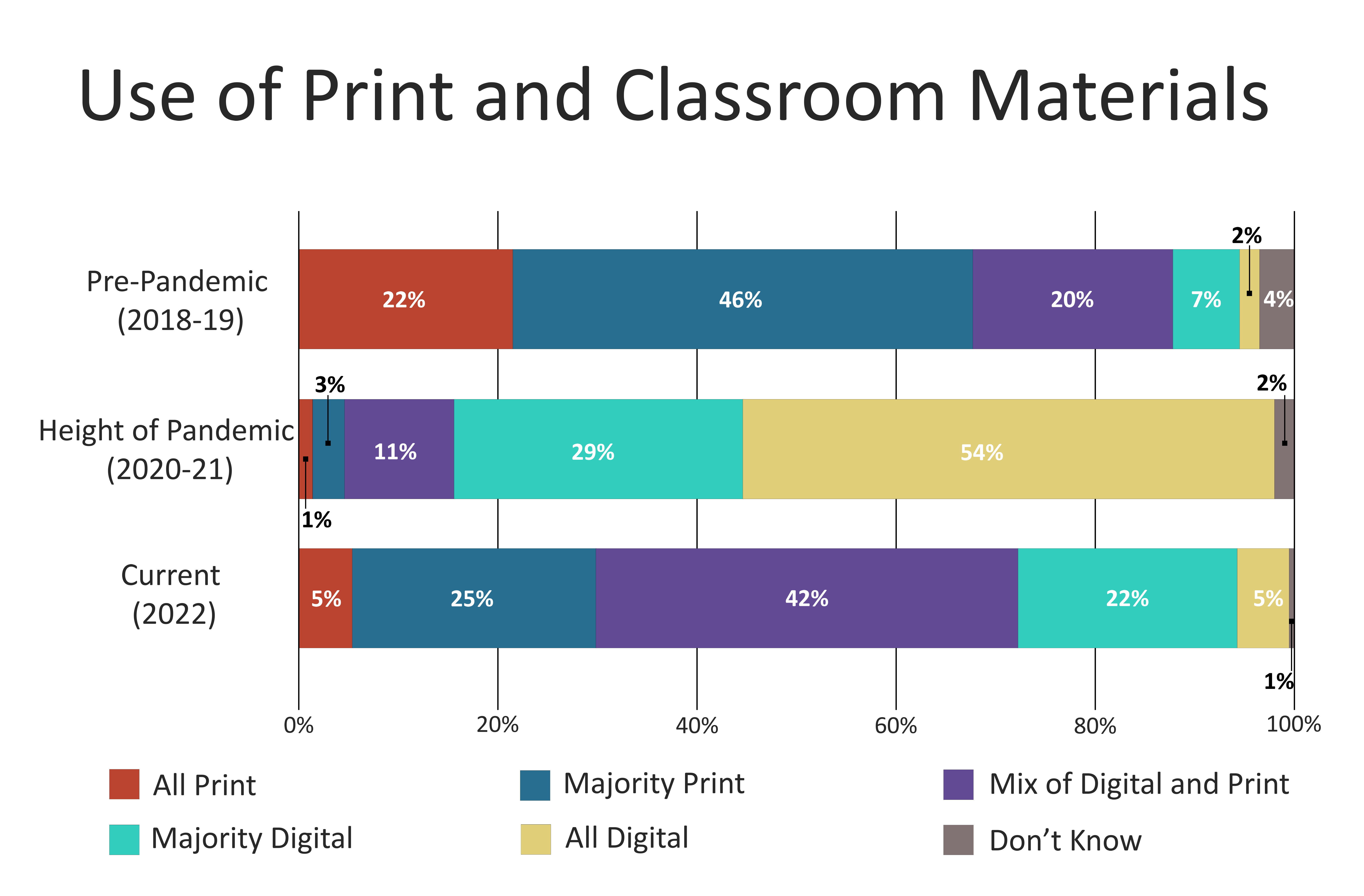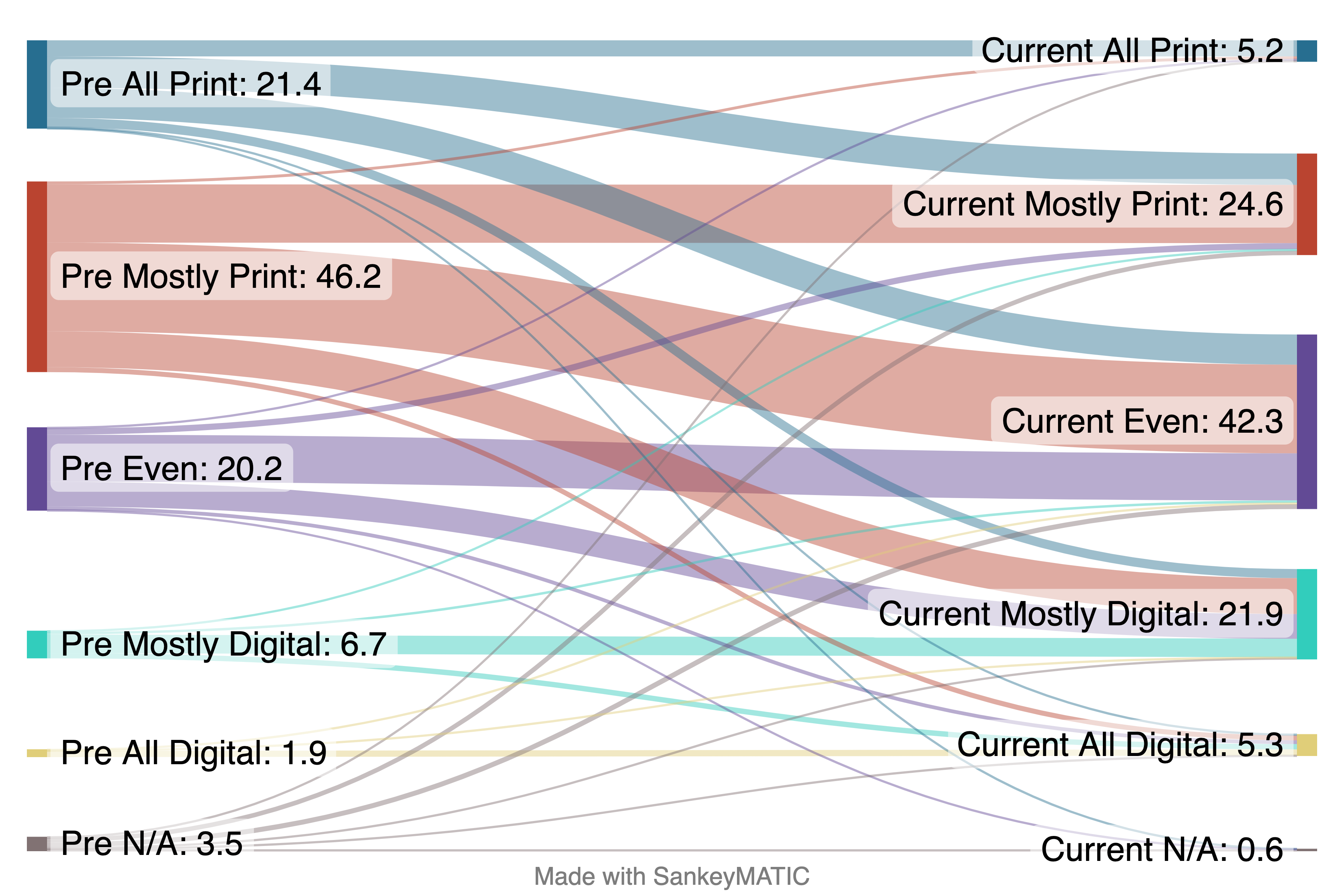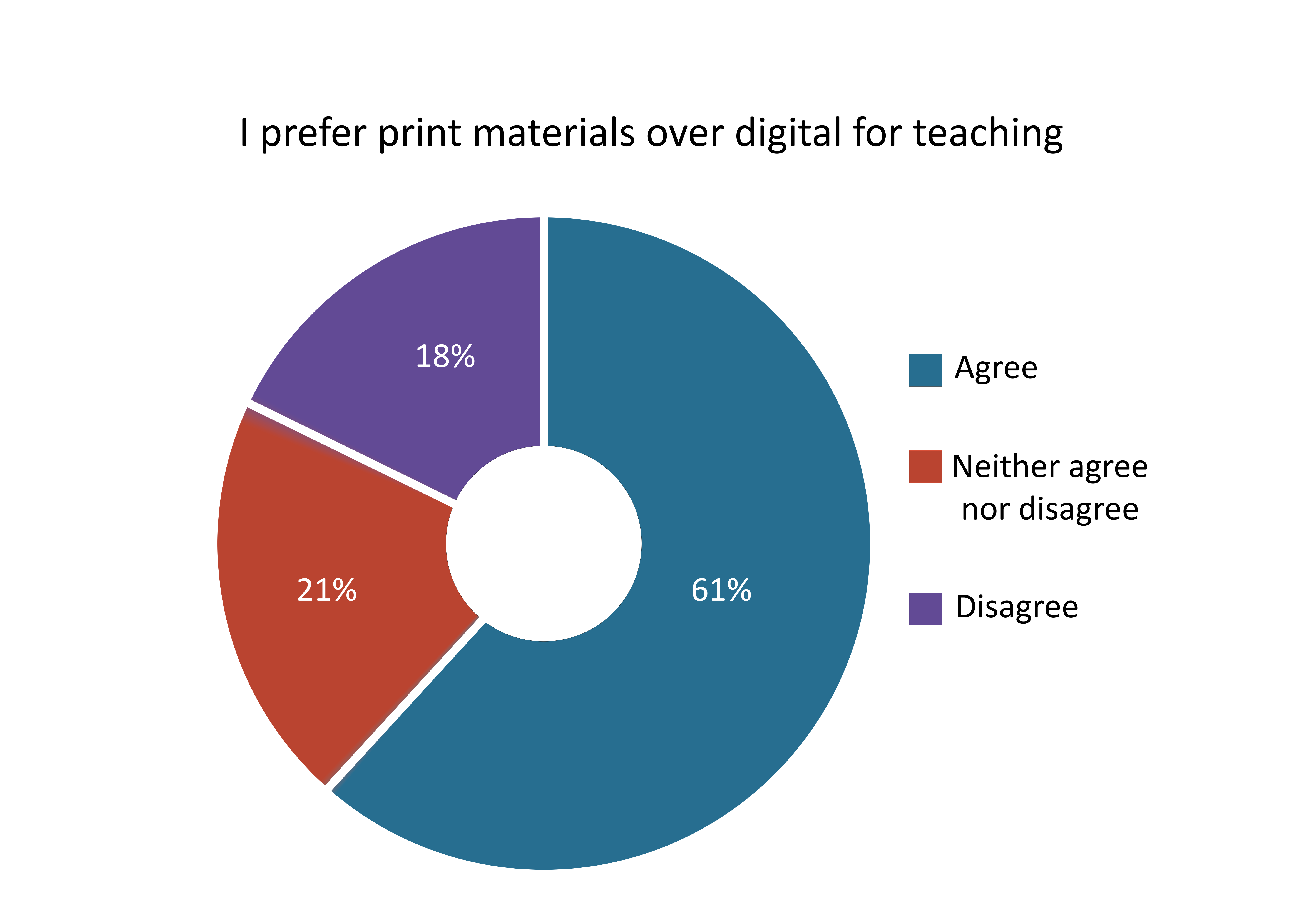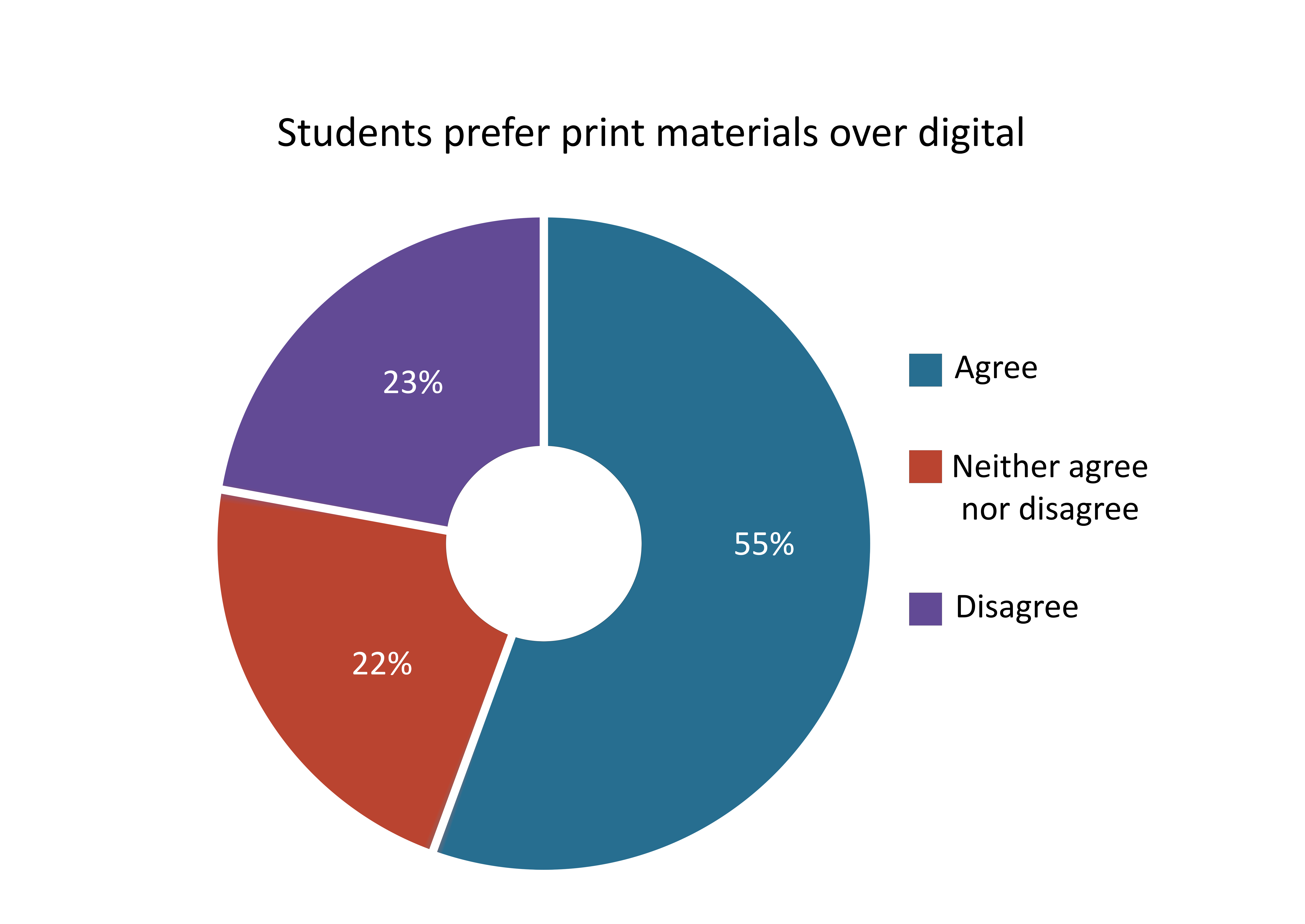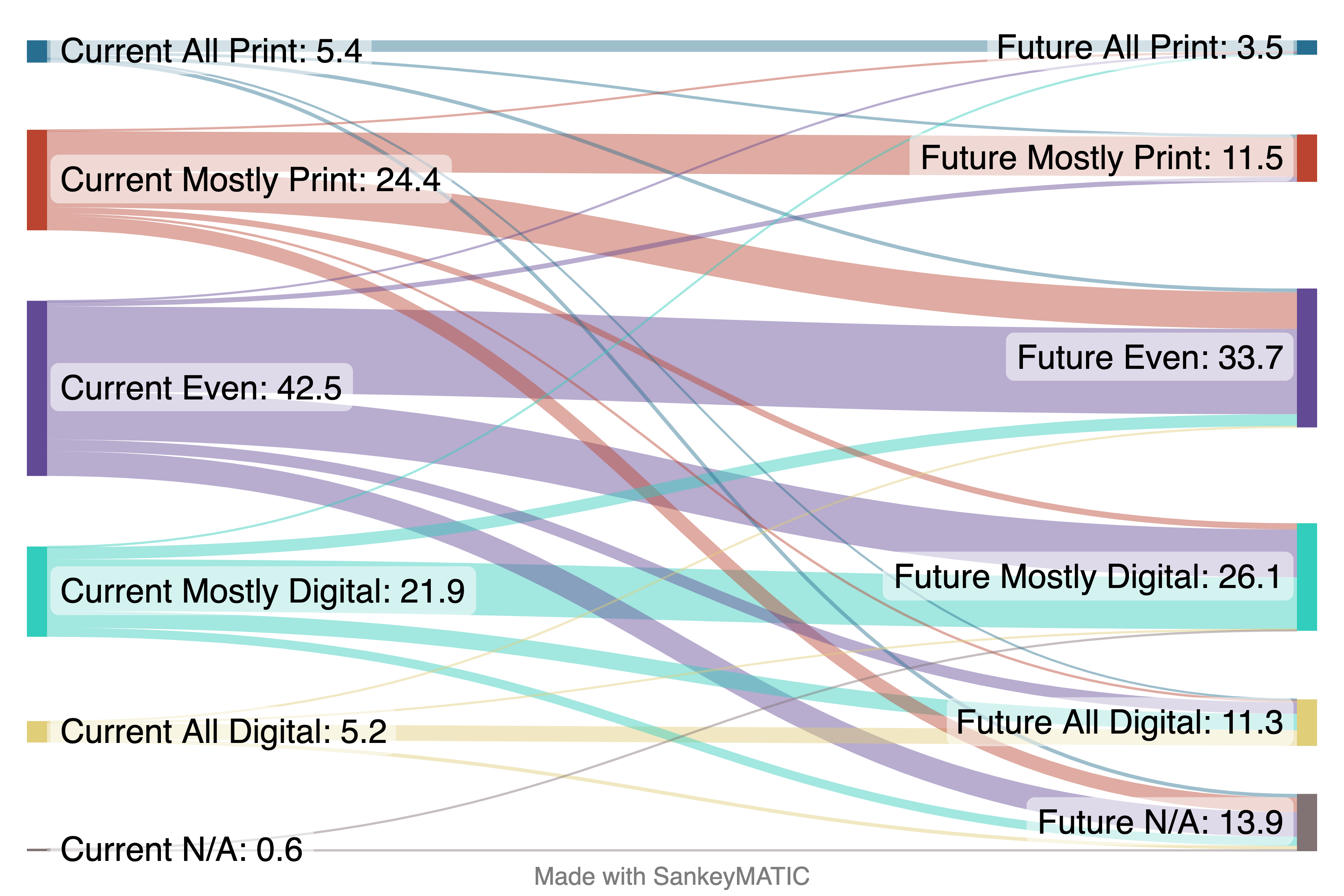Research Article:
Teachers believe the future of K-12 classroom materials is digital
Julia E. SeamanJeff Seaman
Nate Ralph
In K-12 classrooms, the pandemic required teachers to adopt and use digital materials. How much of their digital experience will teachers continue to use in the post-pandemic classroom?
The global COVID-19 pandemic and subsequent response had major effects on education in the US. In the spring of 2020, most classrooms around the nation suddenly shifted to remote learning – only 24% of teachers reported they taught all instruction in-person. This drastic transition required wholesale changes in curricula materials and teacher-student interactions, as many traditional options did not work in this new remote-classroom setting. Teachers and school districts were forced to switch to using digital materials, while grappling with a lack of experience with remote instruction: only 11% of the teachers had some online teaching experience.
For the 2021-22 school year there was a vast return to the classroom: 90% of teachers reported they taught all in-person. However, these teachers now had experience with digital tools. Looking to the future and potential post-pandemic classroom, we are left with some questions:
- How will teachers incorporate their new digital materials with their traditional physical in-person classroom materials?
- Was the pandemic switch to digital a one-time blip, or does it predict more long-term adoption of digital?
Chart 1: The Pandemic Effect
Bar chart showing the proportions that teachers reported their use of difference formats of classroom materials from pre-pandemic (2018-2019), height of the pandemic (2020-21), and current (2021-22).The shift from in-person, traditional learning to completely virtual learning during the pandemic was incredibly challenging, but there are a lot of positives that came out of it. Unfortunately, it also pushed students to be very reliant on their technology to feel successful. A strong hybrid curriculum that includes online skill-building activities, content specific lessons, and accompanying PD could be a valuable way to get students (and teachers) back on track.
Before the pandemic, print and physical classroom materials were very common, with 22% of teachers using “all print,” and another 46% using “majority print.” After the onset of the pandemic the use of digital materials skyrocketed. By the height of the pandemic (2020-21) only 4% of teachers were using “all” or “majority print” materials, while, 54% of teachers were using “all digital” materials.— Secondary School Teacher
For 2022, most teachers were back to teaching in-person, with a similar shift back to physical and print materials away from digital. However, the proportions of “all” or “majority print” materials are less than half what it was pre-pandemic, with a large growth in teachers using an “even mix” of print and digital materials.
Chart 2: Who has moved back to pre-pandemic patterns and who has not?
Sankey Diagram showing percentage of use from pre-pandemic (2018-19) to current (2021-22) for format of classroom materials.My district refuses to buy print textbooks for students, but even in our relatively wealthy district, kids don’t have consistent access to the internet. Furthermore, most of the kids HATE reading online. They do what most people do — skim. That might be okay for something written at a lower reading level, but it works poorly for challenging literature. If most of the administration and staff print out any long emails or PDF we are expected to read, why would we expect the kids to read high-level texts online?
Let’s compare pre-pandemic responses from teachers to their current use of physical and digital classroom materials.— Secondary School Teacher
If we follow the flow on Chart 1 from pre-pandemic (left side) to the current use (right side), we can see the pattern of how teachers changed their classroom materials’ formats. Lines moving from one category group to another indicate the amount of teachers that used those two mixes of materials.
For example, we can see the purple pre-pandemic “even mix” of digital and print materials breaks into six parts, with the largest going to the currently “even mix” group, and slightly smaller one to “mostly digital” group, and four small lines indicating only a few teachers moved to “all print,” “mostly print,” “all digital,” or “N/A.”
Overall, there is a trend for teachers to use slightly more digital materials currently than they had prior to the pandemic. This can be seen in the lines moving left to right mostly going into to the same group or to a lower group indicating more digital use. The number of teachers using “all print” materials is smaller than pre-pandemic, and we can see that the majority of these were teachers who had previously used “all print” materials. Similarly, those teachers who used “all digital” materials pre-pandemic mostly continued to use “all digital” materials currently, though now with many new teachers using it as well.
Charts 3 and 4: Preferences for digital materials
Pie charts for teacher agreement to two statements: “I prefer print materials over digital” and “Students prefer print materials over digital.”Over half of all teachers state that they prefer print over digital materials for teaching. Though this leaves a sizable number of teachers who don’t have a preference or who prefer digital materials. When teachers are asked to report about their student preferences, they believe students have similar proportion for their preferences.
Interestingly, the percentage of teachers who believe their students prefer digital materials is greater than the percentage of teachers who prefer digital materials themselves. This means that some teachers must choose between the print formats they prefer, versus the digital formats their students prefer.
Chart 5: Future growth for digital
Sankey Diagram showing percentage of use from current (2021-22) to future (2025) for format of classroom materials.My district refuses to buy print textbooks for students, but even in our relatively wealthy district, kids don’t have consistent access to the internet. Furthermore, most of the kids HATE reading online. They do what most people do — skim. That might be okay for something written at a lower reading level, but it works poorly for challenging literature. If most of the administration and staff print out any long emails or PDF we are expected to read, why would we expect the kids to read high-level texts online?
Seventy-one percent of teachers believe they will use an “even mix,” “mostly digital,” or “all digital” materials in their classrooms by 2025. Comparing to their current use, almost half of all teachers (49%) believe they will use a similar level of print and digital, and just under half (45%) of teachers move to a group that uses more digital materials than they currently do. Only 6% of teachers believe their future classroom will have lower proportion of digital materials.— Secondary School Teacher
Of course, there remains a small number of teachers committed to “all print” materials, whether this is by preference and/or necessity for their students or classrooms. Of the 33 teachers (3.5% of all teachers) who believe their future classroom will be all print, two-thirds of them used all print materials pre-pandemic and currently, though all but 2 teachers had switched to some digital materials during the pandemic.
Takeaways
The pandemic experience has jump-started the migration to a digital future, and it’s clear that K-12 education will not be returning to pre-pandemic patterns.That said, before the digital future can arrive there are still many problems to overcome. Some are structural, such as improving student access to technology, providing proper equipment for classrooms, and having the specific classroom lessons available in a digital format. Other obstacles may be more personal for teachers and students. Both groups will need to learn how to use these new digital materials, whether through direct experience or formal training.
The move to a digital K-12 classroom may also help prepare students for their future higher education and workplace environments. Many post-secondary schools are fully embracing digital learning, with the majority of higher education faculty report teaching at least on course fully or partially online in 2020 and expressing a desire to teach some or all courses online. Current K-12 students will need to be prepared following graduation for this experience.
About this research brief:
Sankey diagrams created using SankeyMATIC. The data presented here comes from our 2021-22 national survey of K-12 teachers and administrators. All reports use responses from nationally-representative samples of K-12 administrators and teachers. This project supported from grants from the William and Flora Hewlett Foundation. More information and the full reports and infographics are available here.Recent Publications
Digital Learning Pulse Surveys
- Infographic: 2023-2024 Digital Learning Pulse Survey
- The Digital Transformation of the Community College
- Planning for a Smaller Future: Dealing with Declining Enrollments
Course Material Affordability
- Pennsylvania Course Materials Survey 2023
- Pennsylvania Course Materials Presentation
- Course Material Webinar Slides
Open Educational Resources
- Digitally Established: Educational Resources in U.S. Higher Education, 2023
- Curricula of Many Sources: Educational Resources in U.S. K-12, 2023
- Research Brief: Digital and OER Textbook Adoption
- Research Brief: Faculty Satisfaction with Course Materials varies by Publisher
STEM
- Teaching Online: STEM Education in the Time of COVID
- What Makes a STEM Student
- Perceptions of the Future of STEM Education
Distance Education
- Digital Faculty: Faculty Social Media Use and Communications
- Infographic: Digital Faculty
- Grade Increase: Tracking Distance Education in the United States
Follow us on
Privacy
All survey respondents are provided complete anonymity. No personally identifiable information is released. Full privacy policy.
